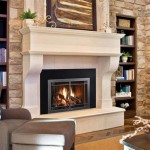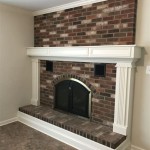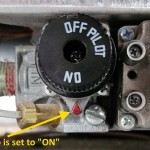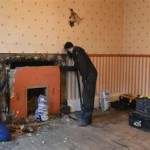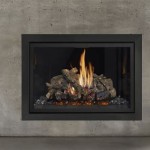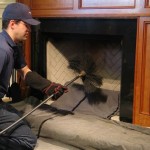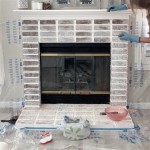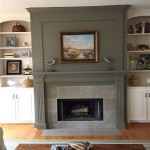Metal Fireplace Chimney: A Comprehensive Overview
A metal fireplace chimney is a crucial component of any wood-burning or gas-burning fireplace system. Its primary function is to safely vent combustion byproducts, such as smoke, carbon monoxide, and other harmful gases, away from the living space and into the atmosphere. Understanding the different types of metal chimneys, their components, installation requirements, and maintenance needs is vital for ensuring the safe and efficient operation of a fireplace.
Metal chimneys offer several advantages over traditional masonry chimneys. They are typically lighter, easier to install, and less expensive. Furthermore, they are often more resistant to damage from earthquakes and other natural disasters. Metal chimneys are also more adaptable to a wide range of installations and can be used in situations where a masonry chimney is not feasible.
Types of Metal Fireplace Chimneys
There are primarily two types of metal fireplace chimneys: air-insulated and insulated. Both types are designed to provide a safe and effective venting system, but they differ in their construction and performance characteristics.
Air-Insulated Chimneys: These chimneys feature a double-wall construction with an air space between the inner and outer layers. This air space provides some insulation, but they generally require greater clearances to combustible materials compared to insulated chimneys. They are typically less expensive than insulated models but may not be suitable for all installations, particularly those with limited space. Air-insulated chimneys are frequently used in factory-built fireplace installations and prefabricated homes.
Insulated Chimneys: Insulated chimneys incorporate a layer of non-combustible insulation material, such as mineral wool, between the inner and outer walls. This insulation provides superior thermal performance, allowing for reduced clearances to combustible materials and a cooler outer surface. This increased insulation also helps to maintain a higher flue gas temperature, which reduces the risk of condensation and creosote buildup. These chimneys are generally more expensive than air-insulated models but are often preferred for their enhanced safety and performance characteristics.
Key Components of a Metal Fireplace Chimney System
A metal fireplace chimney system comprises several essential components that work together to ensure safe and efficient venting. These components must be compatible and properly installed to guarantee optimal performance.
Chimney Pipe: This forms the primary vertical section of the chimney, transporting combustion gases from the fireplace to the outside. The pipe is typically constructed from stainless steel or aluminized steel, depending on the type of fuel being burned and the manufacturer's specifications.
Tee Connector: The tee connector connects the chimney pipe to the flue collar of the fireplace. It includes a cleanout to allow for easy removal of creosote and other debris that may accumulate in the chimney. The cleanout should be readily accessible for regular maintenance.
Elbows: Elbows are used to offset the chimney pipe to avoid obstructions or to alter the chimney's path. The number and angle of elbows should be kept to a minimum, as they can restrict airflow and increase the risk of creosote buildup.
Support Brackets: Support brackets provide structural support to the chimney pipe, particularly in installations where the chimney extends a significant distance above the roofline. These brackets are typically attached to the building structure and ensure that the chimney remains stable and secure.
Roof Flashing: Roof flashing creates a watertight seal around the chimney where it penetrates the roof. This prevents water from entering the building and causing damage to the roof structure. Proper flashing is essential for preventing leaks and maintaining the integrity of the roof.
Chimney Cap: The chimney cap prevents rain, snow, leaves, and animals from entering the chimney. It also helps to prevent downdrafts, which can cause smoke to enter the living space. A chimney cap is an essential component for protecting the chimney and ensuring proper drafting.
Installation and Maintenance Requirements
Proper installation and regular maintenance are crucial for ensuring the safe and efficient operation of a metal fireplace chimney. Incorrect installation can lead to dangerous conditions, such as chimney fires and carbon monoxide poisoning. Neglecting maintenance can result in reduced performance and increased risk of chimney failure.
Installation: Metal fireplace chimneys must be installed according to the manufacturer's instructions and all applicable local building codes. It is highly recommended that installation be performed by a qualified professional who has experience with metal chimney systems. Proper clearances to combustible materials must be maintained to prevent fires. The chimney must be properly supported and secured to the building structure. All connections must be airtight to prevent leakage of combustion gases.
Maintenance: Regular chimney inspections are essential for identifying potential problems and ensuring that the chimney is functioning properly. The National Fire Protection Association (NFPA) recommends that chimneys be inspected at least once a year, even if they are not used frequently. A qualified chimney sweep should be hired to perform the inspection and cleaning. The chimney should be cleaned regularly to remove creosote and other debris that may accumulate in the flue. Creosote is a highly flammable substance that can cause chimney fires. The frequency of cleaning will depend on the type of fuel being burned and the amount of usage. Any damage to the chimney, such as cracks, corrosion, or loose connections, should be repaired promptly. The chimney cap should be inspected regularly to ensure that it is in good condition and free of obstructions.

Fireplace Systems Outdoor Masonry Brick Fireplaces Modular Burntech 818 564 4253

Fireplace Systems Outdoor Masonry Brick Fireplaces Modular Burntech 818 564 4253

Modern Farmhouse Outdoor Fireplace Steel With Black Corrugated Metal Chimney The An Backyard

Interior Exterior Metal Fireplace Design Inspiration

Metal Fireplaces Built In Corten Steel

8 Best Chiminea Fire Pits For Your Backyard Clay Steel And More

Metal Chimney Detail

All About Prefabricated Fireplaces Chimney Savers

6 Diffe Types Of Chimneys Used For Homes And Other Structures

Home Garden Metal Wood Fireplace With Chimney And Storage Smoker Big Bbq Grill Firepit China Made In Com
Related Posts

